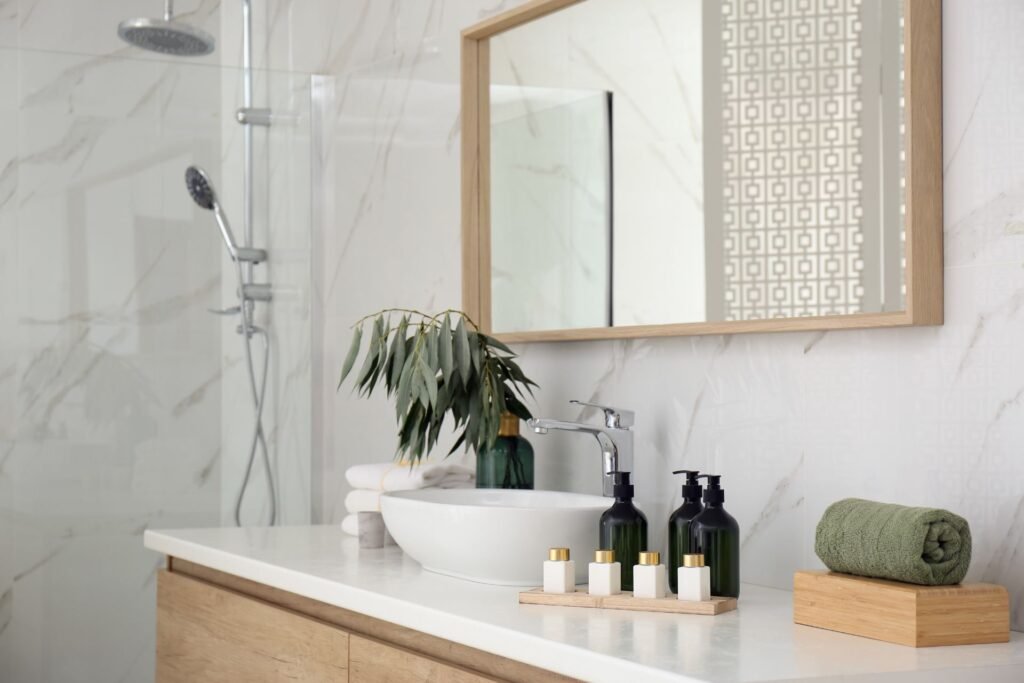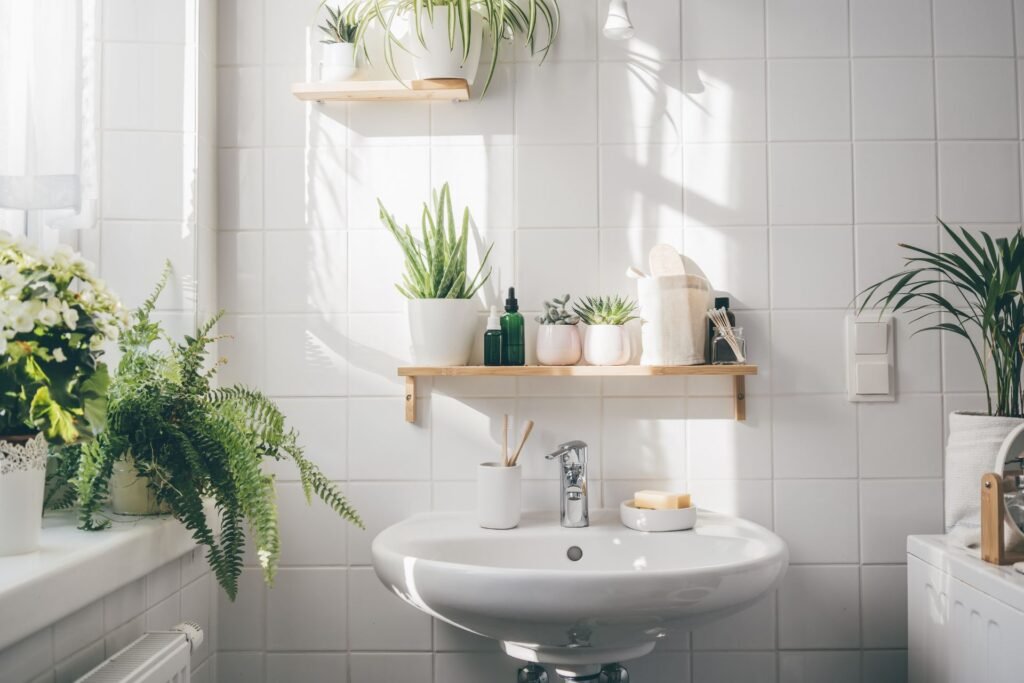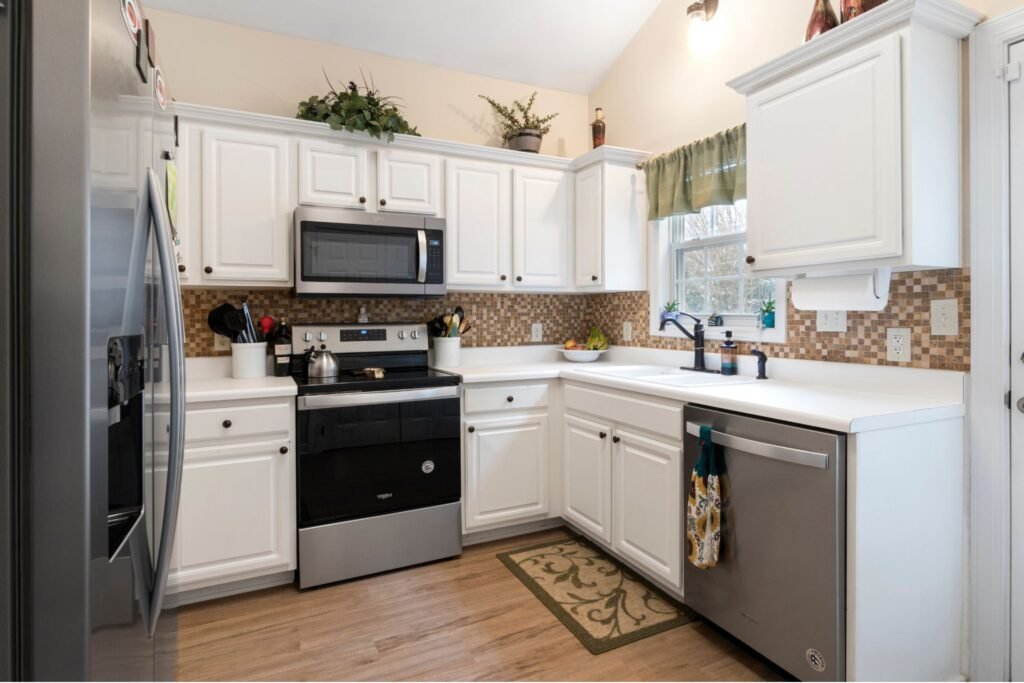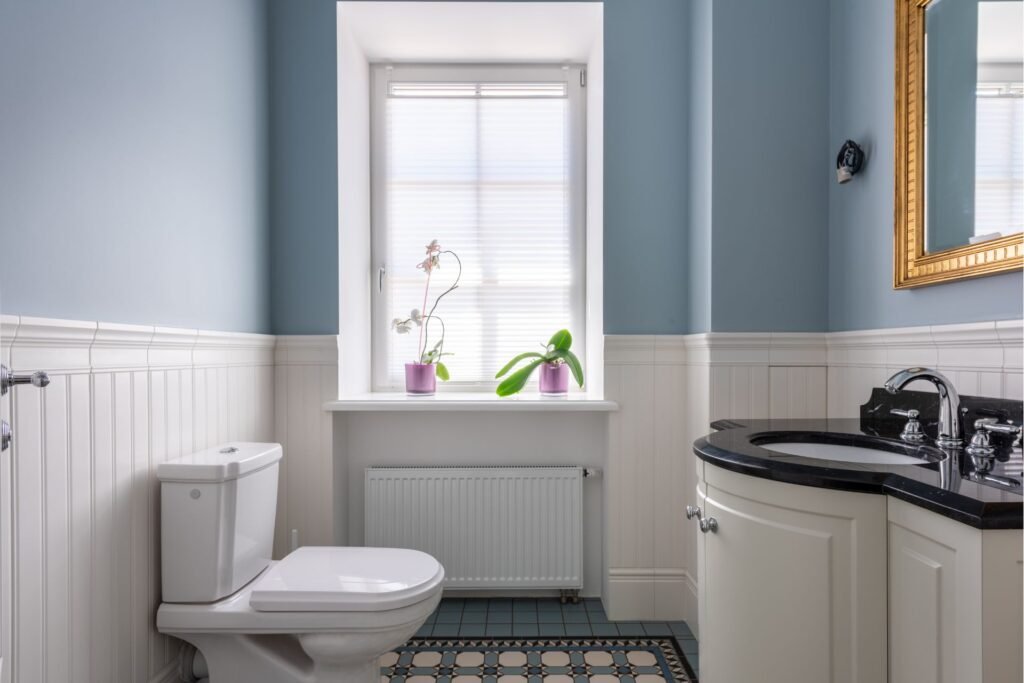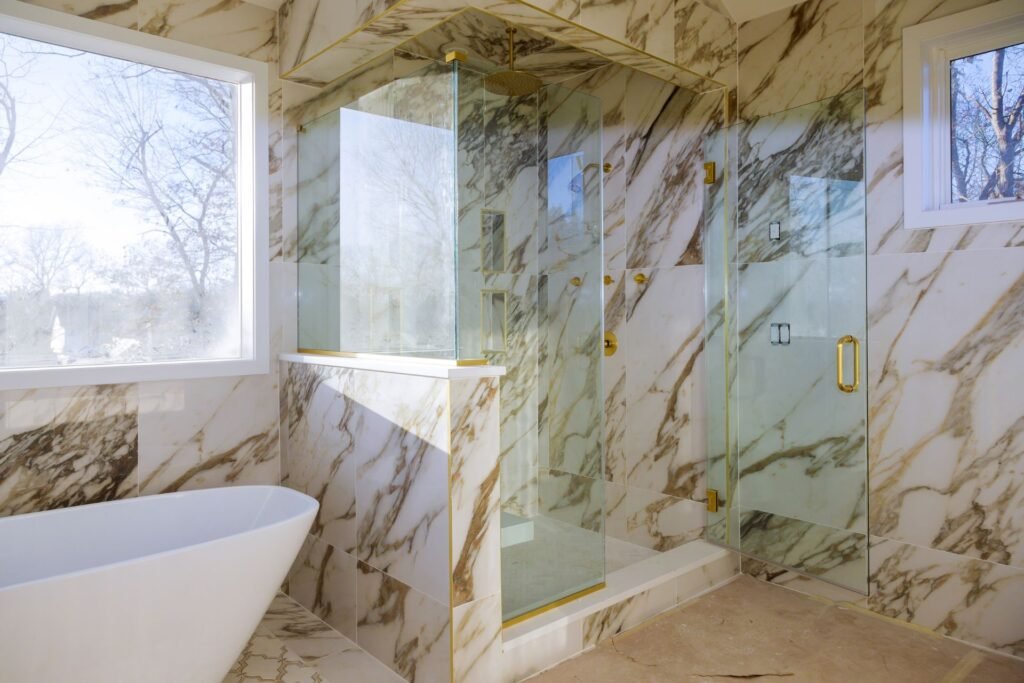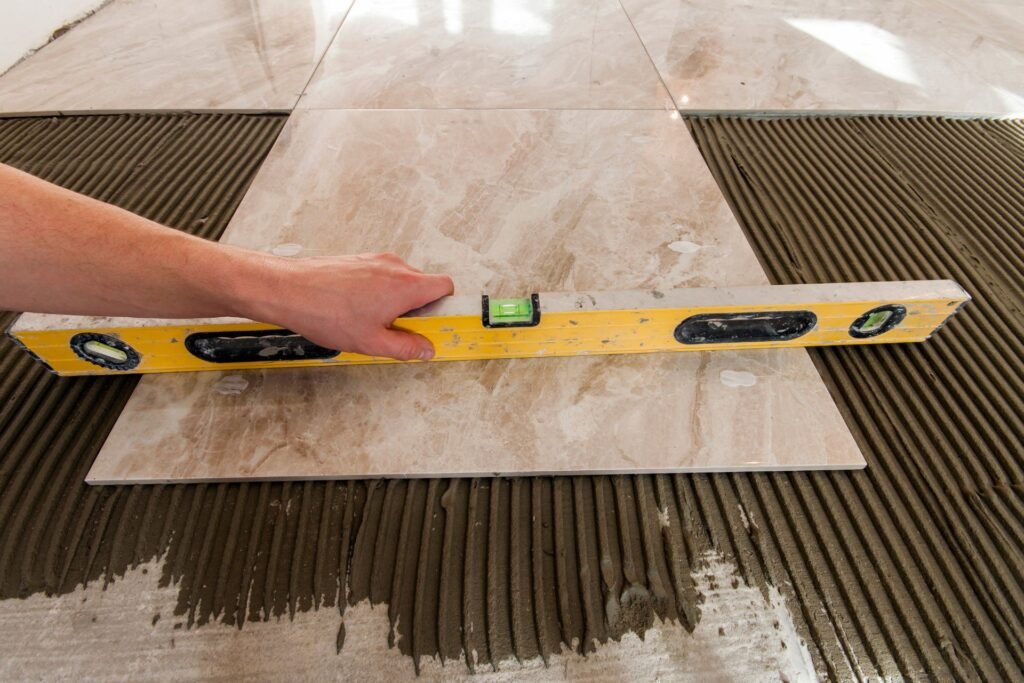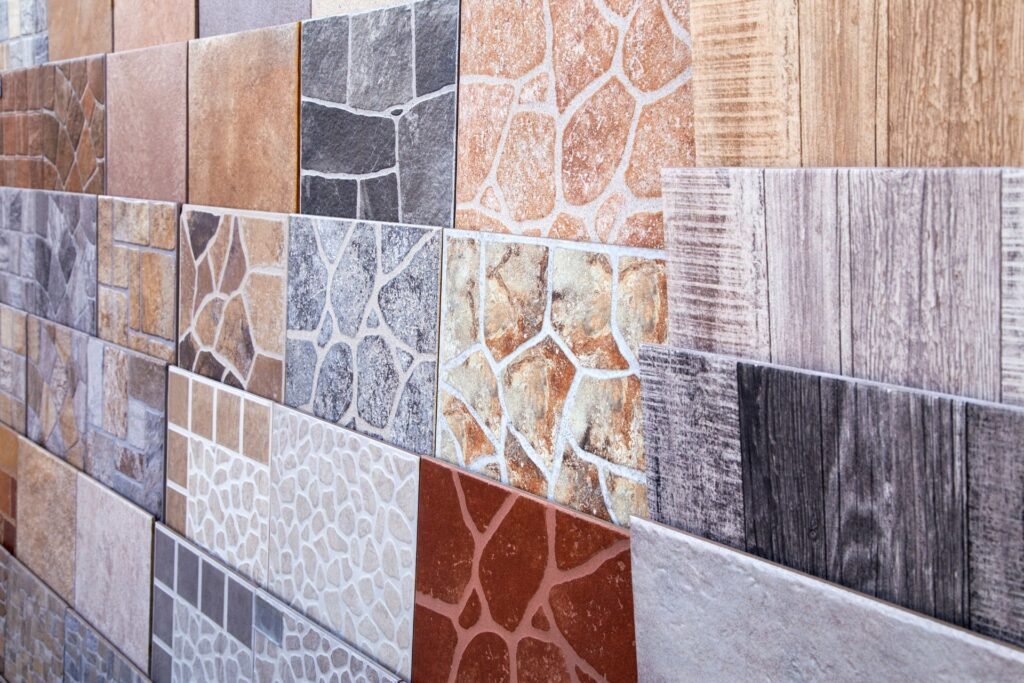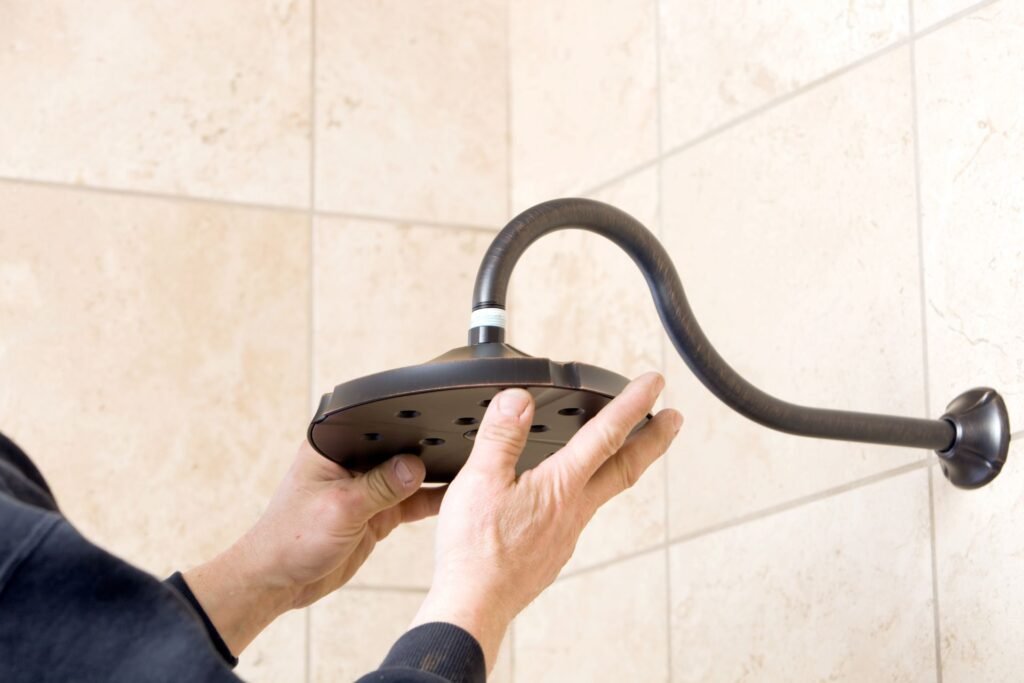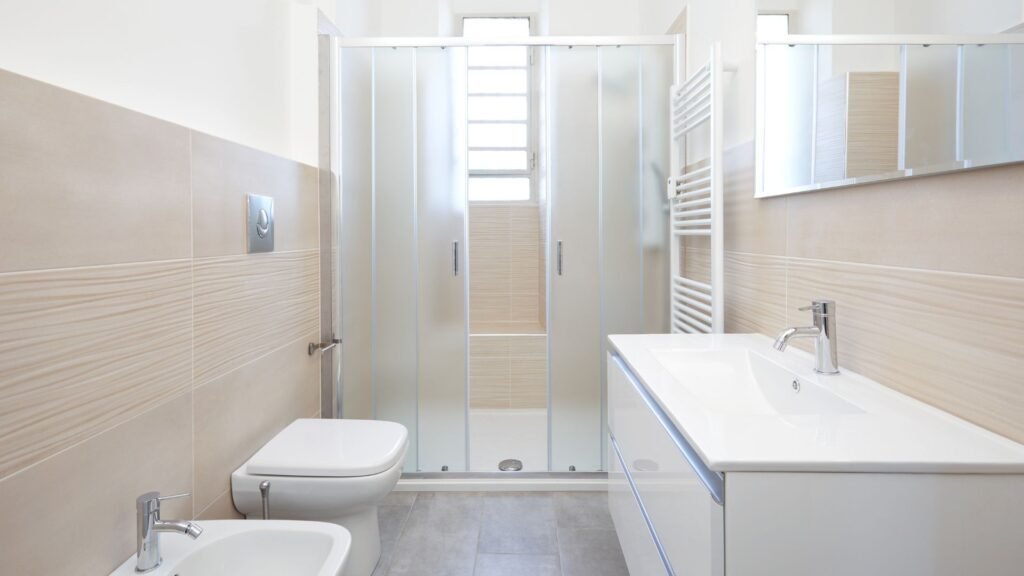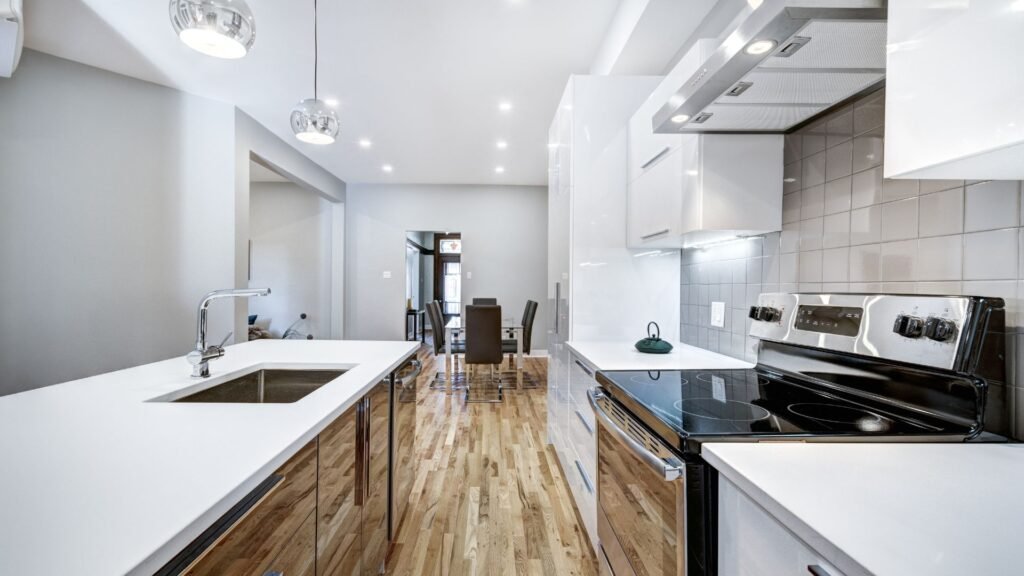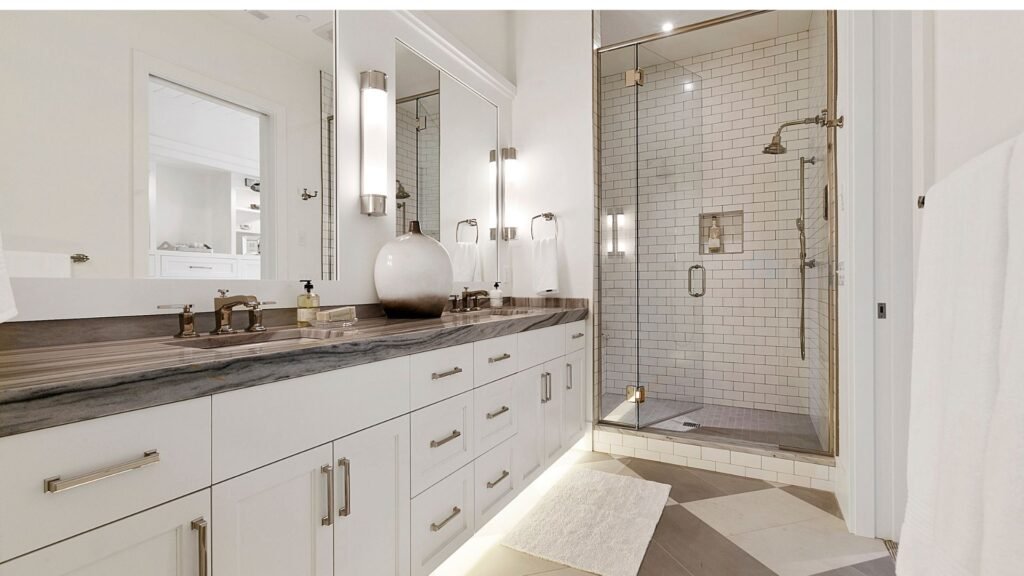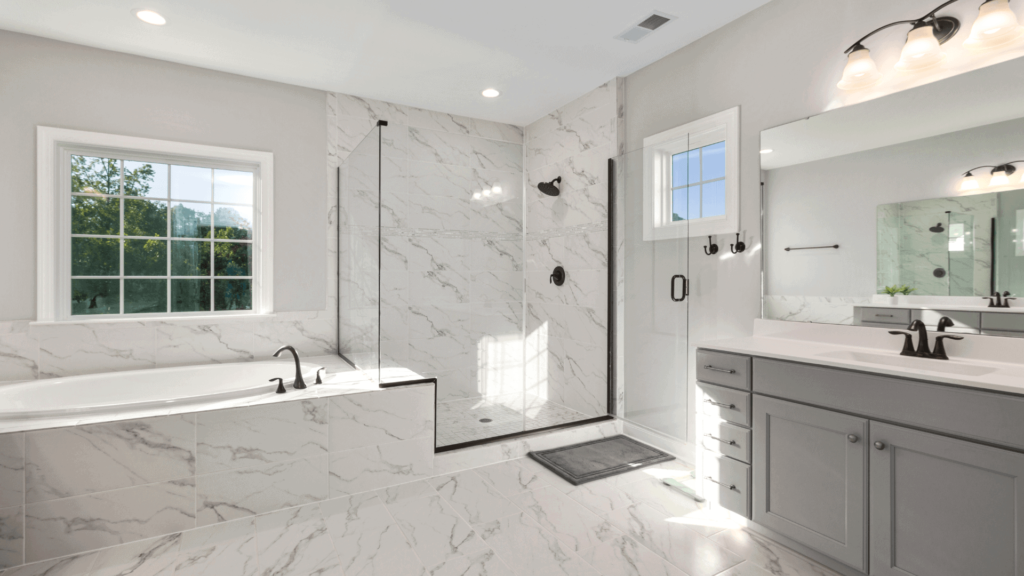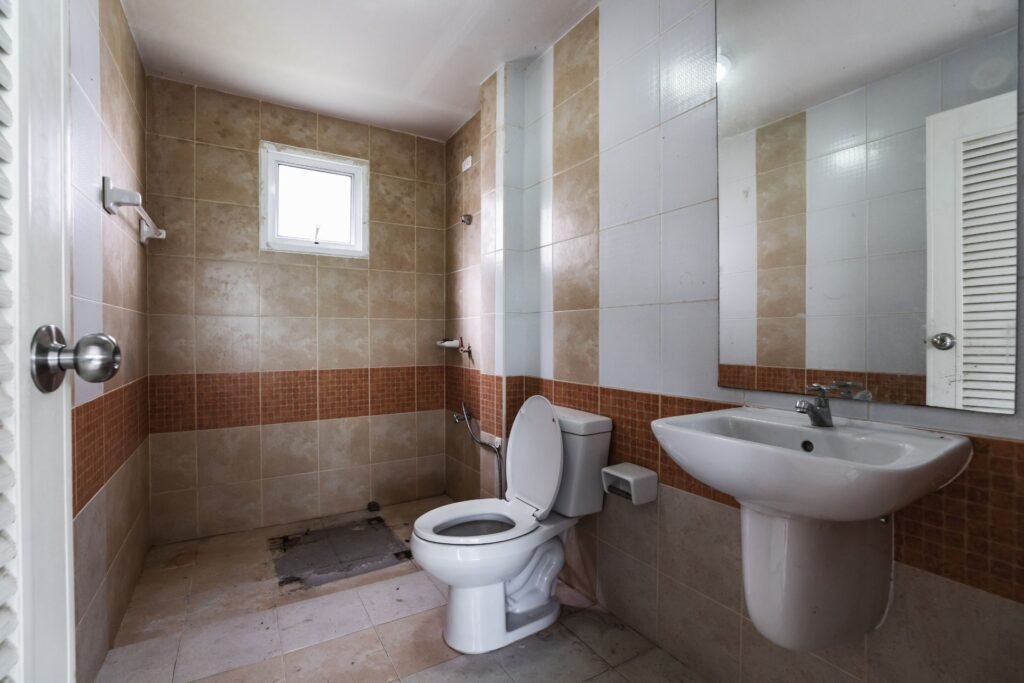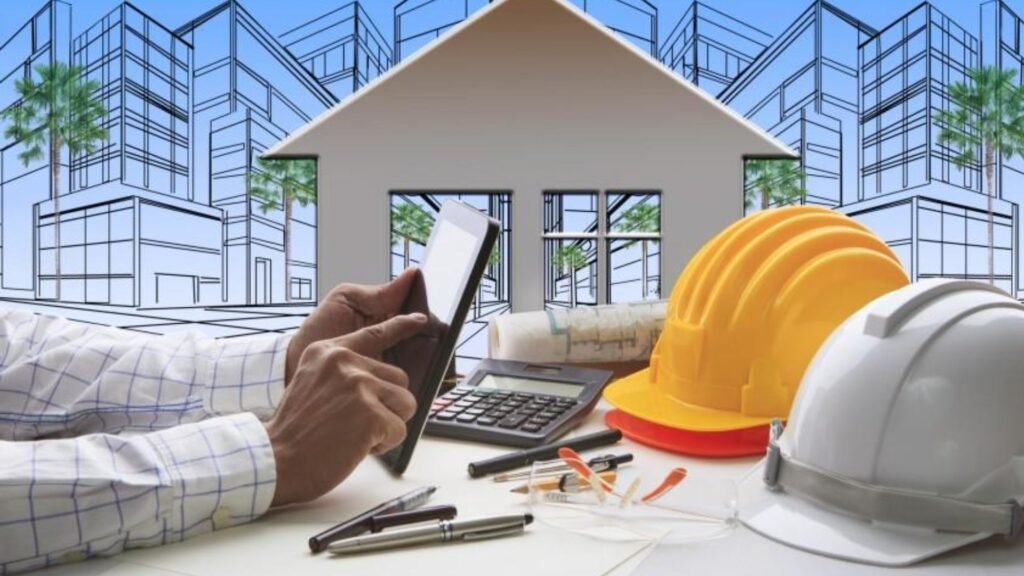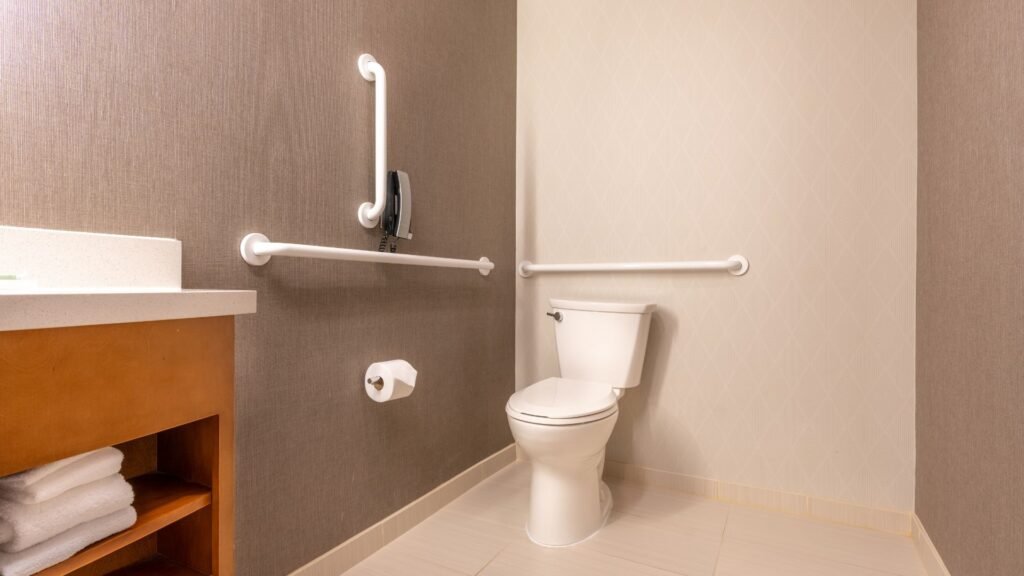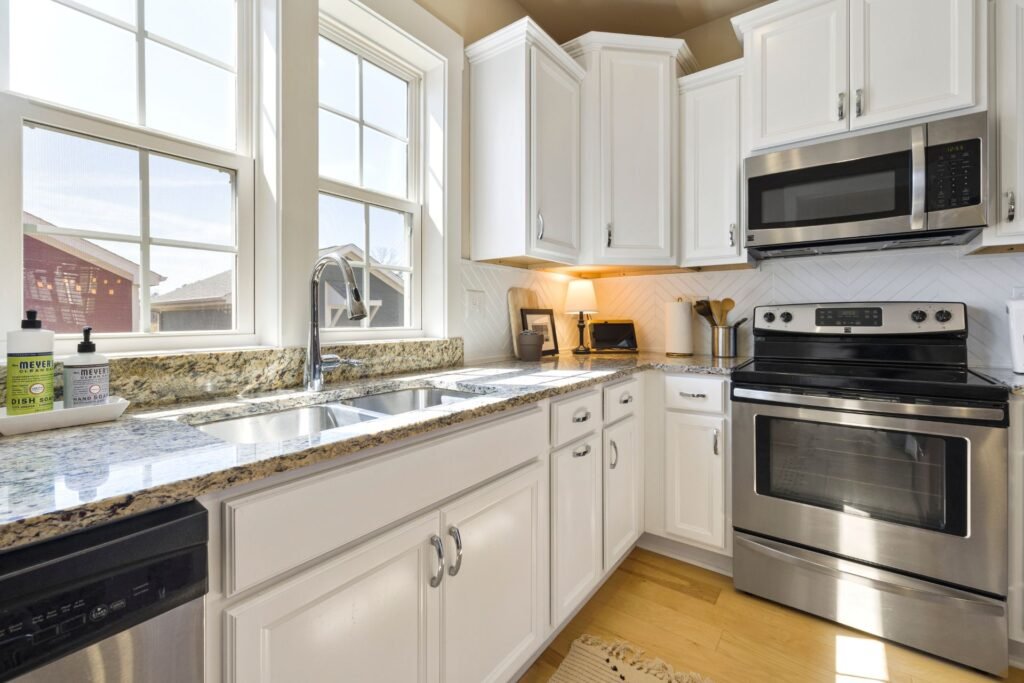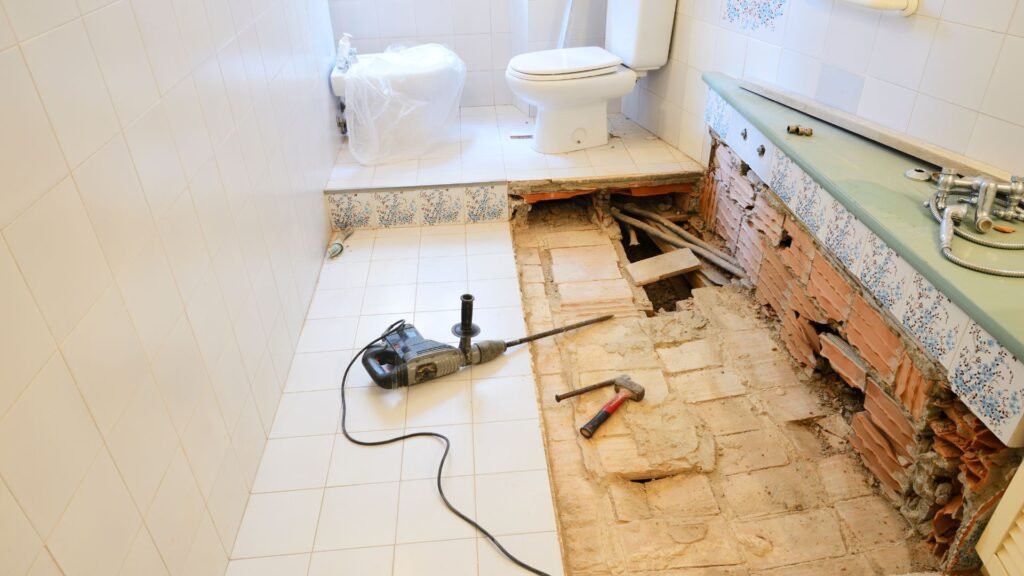Welcome to your complete guide on how to renovate a bathroom in NZ. Whether you’re dealing with outdated tiles, poor layout, or just ready for a fresh look, renovating your bathroom can transform both the style and function of your home. In this guide, you’ll learn what it really takes to plan, budget, and complete a bathroom renovation that suits New Zealand homes and standards. From choosing the right fittings to hiring qualified tradies and navigating council approvals, we’ll walk you through every step in simple, practical terms, so you can avoid costly mistakes and get the result you want.
To renovate a bathroom in NZ, start by setting a clear budget and planning your layout. Choose durable, water-resistant materials suited to local conditions, and select efficient fixtures that match your style. Hire licensed tradies for plumbing and electrical work, and check if you need council consent. Focus on function, quality, and smart design to create a bathroom that adds long-term value to your home.
Table of Contents
Know Your Budget
Planning a bathroom renovation in New Zealand starts with knowing how much you can realistically spend. Setting a clear and detailed budget will help you make smarter choices and avoid unexpected expenses down the line. Whether you’re going for a full overhaul or a basic refresh, understanding the typical costs involved is key to staying on track.
Average Bathroom Renovation Cost In NZ
The average bathroom renovation cost in NZ ranges from $15,000 to $30,000. For a basic renovation with standard materials and fittings, expect to spend around $15,000 to $20,000. If you’re aiming for a mid-range upgrade with new tiles, fixtures, and waterproofing, the cost usually lands between $20,000 and $25,000. For a high-end, custom-designed bathroom with premium fittings, underfloor heating, and designer tiles, costs can easily reach $30,000 or more.
These estimates cover most standard homes in New Zealand and include demolition, plumbing, electrical work, waterproofing, tiling, and fixtures. But they don’t always include hidden costs like structural repairs or plumbing rerouting, which can quickly raise your total spend.
Factors That Affect The Total Cost
Several factors influence how much you’ll end up paying for your bathroom renovation in NZ:
- Size of the bathroom: Larger bathrooms naturally require more materials and labour.
- Material choices: Natural stone, designer tiles, and imported fittings increase costs compared to locally sourced standard options.
- Labour rates: Licensed tradespeople such as plumbers and electricians charge varying rates based on experience, availability, and location.
- Plumbing changes: Moving the toilet or shower involves extra plumbing work, which adds to the budget.
- Quality of fittings: Low-end fittings are cheaper upfront, but investing in durable, water-efficient fixtures often saves money in the long run.
- Hidden repairs: Leaks, mould, or water damage can appear during the demolition phase and may require extra work.
Set A Realistic Budget Before Starting
Before tearing out tiles or picking paint colours, sit down and map out your ideal budget. Be honest about what you can afford and build in a 10–15% buffer for unexpected costs. Prioritize must-haves over nice-to-haves, and don’t base your budget on the cheapest quotes alone. Compare at least three different contractors and ask what’s included.
If you’re on a tight budget, consider renovating in stages or keeping your current plumbing layout to save money. Re-tiling or updating fittings without moving the plumbing can cut your costs significantly while still refreshing the look of your bathroom.
Planning your budget carefully doesn’t just help you control costs, it sets the tone for your entire renovation project and helps you make confident, well-informed decisions.

Plan Your Ideal Layout
Planning the right bathroom layout is one of the most important steps in a renovation. It determines how well your space functions, how comfortable it feels, and how much you’ll spend. Before choosing tiles or fittings, take a step back and focus on how the room is used, and how you want it to work better.
Keep Or Move Plumbing?
In most cases, keeping your existing plumbing layout will save you thousands. That means leaving the toilet, shower, and vanity in the same positions. Moving pipes, especially drains or water lines, can be expensive and often requires council consent. If your current layout already works well, don’t change it just for the sake of change.
But if you’re dealing with a cramped or awkward setup, or if the toilet is in an inconvenient spot, moving fixtures might be worth the investment. Always check with a licensed plumber before making decisions. They can assess what’s possible based on your home’s structure and give a realistic cost estimate.
Maximize Space And Function
A smart layout should make your bathroom feel open and practical, even if you’re working with a small footprint. Start by identifying must-haves. Do you need a bath for kids? Would a double vanity reduce morning stress? Is storage a problem right now?
Use wall space wisely. Consider wall-hung vanities or mirrored cabinets to save room while adding function. Avoid crowding the floor with bulky storage units. Keep pathways clear, ideally, leave at least 90cm of clearance in front of toilets and showers for easy access.
If you’re short on space, opt for a walk-in shower instead of a shower over bath. Install recessed shelves for toiletries instead of sticking racks onto walls. Every inch counts in small NZ bathrooms.
Consider Common NZ Home Styles
Bathroom layouts in New Zealand often depend on the type of house. If you’re renovating a classic villa or bungalow, you may be dealing with high ceilings, timber floors, and plumbing that runs beneath the house. This can give you more flexibility with pipework, but older homes may need updated waterproofing or subfloor repairs.
In newer builds, bathrooms often follow a compact, efficient layout with back-to-wall toilets and fully tiled showers. These homes may use slab foundations, which makes moving drains trickier and more costly. If you’re unsure what’s under your floor, get a licensed builder to inspect it before making layout decisions.
Example Layouts To Consider
Here are a few common NZ bathroom setups:
- Classic Villa Layout: Long, narrow bathroom with shower over bath at one end, vanity in the middle, and toilet at the other end. Ideal for preserving the original floorplan but can feel cramped if not updated.
- Modern Family Layout: Walk-in shower, freestanding bath, floating vanity with dual sinks, and a back-to-wall toilet. This layout balances style and practicality for busy households.
- Compact Ensuite Layout: Toilet and corner shower with a small wall-mounted vanity. Great for upstairs bedrooms or rental units.
No matter your house type, design around how your household uses the bathroom. A good layout isn’t about copying trends, it’s about solving daily problems and improving the flow of your space. When done right, it adds comfort, convenience, and long-term value to your home.

Choose The Right Fixtures And Fittings
Choosing the right fixtures and fittings is one of the most important parts of any bathroom renovation. The right selections not only affect how your bathroom looks but also how it functions day-to-day. Whether you’re building a modern space or refreshing a classic layout, your choices will shape the long-term usability and comfort of the room. Here’s what to keep in mind when selecting bathroom fixtures in NZ.
Showers, Bathtubs, Vanities, And Toilets: What’s Trending In NZ
Homeowners across New Zealand are leaning toward clean, minimalist bathroom designs that focus on comfort, smart storage, and water efficiency. Frameless glass showers are becoming more common for their sleek appearance and ease of cleaning. Wall-mounted vanities help create the illusion of space, which is especially useful in smaller bathrooms. For bathtubs, freestanding tubs remain popular in larger bathrooms where they become a visual centerpiece. When it comes to toilets, soft-close lids and back-to-wall models are trending due to their tidy appearance and space-saving design.
Trends aside, it’s important to choose items that suit your space and lifestyle. If you’ve got kids, you may want a durable bath and extra storage under the vanity. For older homes, blending traditional fixtures with modern features can give the bathroom character without compromising function.
Understanding Water Efficiency And WELS Ratings
Water-saving fittings are not just good for the environment, they can also help reduce your water bill over time. In New Zealand, all bathroom products that use water are rated under the WELS (Water Efficiency Labelling Scheme). This rating system helps you compare products based on how efficiently they use water.
Look for the WELS label on toilets, taps, and showers. The more stars, the more efficient the product. A standard showerhead might use 12–15 litres per minute, while a water-saving model uses 6–9 litres. Over a year, that difference can save thousands of litres.
Choosing water-saving fittings with strong WELS ratings is a smart move if you’re planning for long-term value and sustainability. It’s also something future buyers will appreciate if you plan to sell your home later on.
Where To Buy Quality NZ Bathroom Products
When shopping for bathroom fixtures in NZ, it’s worth going with trusted local suppliers. Reputable brands offer better warranties, quality control, and after-sales service. You’ll also get access to fittings that comply with New Zealand standards for plumbing and safety.
Some of the well-known suppliers in NZ include:
- Reece Bathrooms
- Plumbing World
- Mitre 10
- Mico
- Bathroom Direct
Shopping with these suppliers gives you the advantage of expert advice, showrooms to test products in person, and options that suit a wide range of budgets. Whether you’re after premium finishes or budget-friendly basics, there’s something for every project.
You can also find a growing number of boutique NZ brands offering modern, handcrafted, or eco-friendly bathroom solutions if you’re looking for something different.
Final Tip
Before purchasing, always check compatibility with your current plumbing setup. Not all fixtures are universal, and having to return items or rework plumbing will add unnecessary time and cost to your renovation. Matching style with function ensures your bathroom not only looks great but works efficiently for years to come.
Choosing the right bathroom fixtures in NZ is about more than design, it’s about making smart, future-ready choices that improve your daily life. Make the investment count with fixtures that match your needs, fit your space, and deliver reliable performance.

Pick Materials That Last
When renovating a bathroom in NZ, choosing the right materials is one of the most important decisions you’ll make. New Zealand’s damp climate, especially in coastal and humid regions, makes material durability a top priority. You want surfaces that not only look good but also hold up over time.
For flooring, tiles are the most popular option in Kiwi homes. They’re water-resistant, easy to clean, and come in a wide range of styles to match any bathroom design. Ceramic or porcelain tiles are best for wet areas, especially around showers and bathtubs. If you’re working with a tighter budget, vinyl flooring is a strong alternative. It’s softer underfoot, resistant to moisture, and more affordable to install. Laminate flooring can work in low-moisture bathrooms, but it’s less ideal in areas with frequent water exposure, as it can swell or warp over time.
When it comes to walls, waterproofing is non-negotiable. Wet area membranes or waterproof backer boards should be used behind tiles or paint. For painted surfaces, choose high-quality, mold-resistant bathroom paint designed to handle steam and humidity.
Countertops and cabinetry should be just as moisture-resistant. Engineered stone, laminate, or sealed wood are all common in NZ bathrooms. For cabinetry, opt for materials with sealed edges and finishes that protect against swelling or peeling. Floating vanities are a smart choice, they reduce water contact at the base and create a cleaner, modern look.

Hire The Right Tradies
Renovating a bathroom in New Zealand isn’t just about choosing the right tiles or taps, it’s also about hiring the right tradies to do the job properly. If you’re planning a full renovation, you’ll need skilled professionals like plumbers, electricians, waterproofers, and builders. Knowing who to hire and when can save you time, money, and future headaches.
When You Need A Licensed Builder Or Plumber
In NZ, certain renovation tasks legally require licensed professionals. Any plumbing or drainage work must be carried out by a registered plumber. The same applies to electrical work, only a licensed electrician can legally complete these tasks. If you’re altering structural walls or floors, you’ll need a licensed builder to meet building code requirements.
Skipping licensed tradies can lead to serious problems, including insurance voids, safety risks, or failed inspections. Even if a task seems minor, it’s safer to ask if it requires certification.
Working With A Project Manager Vs. Doing It Yourself
You have two main options: manage the renovation yourself or hire a project manager. Taking the DIY route gives you more control and can reduce costs, but it also means more responsibility. You’ll need to schedule trades, track the budget, and make sure each phase is completed on time.
A project manager, on the other hand, oversees the entire renovation. They coordinate tradies, handle council paperwork, and ensure everything runs smoothly. This is ideal if you have limited time or no experience managing renovations. While project managers charge a fee, they often help avoid delays and costly mistakes.
Tips For Finding Reliable Tradies In NZ
Finding trusted professionals can feel overwhelming, but these tips will help:
- Ask for recommendations from friends or family.
- Check online reviews on platforms like Builderscrack or NoCowboys.
- Always request a written quote, not just a verbal estimate.
- Ask to see examples of recent work or client testimonials.
- Confirm they’re registered and hold current licenses.
It also helps to meet tradies in person before hiring. Ask questions about their process, timeframes, and experience with similar projects.
Certified Tradespeople In NZ
New Zealand has a strict licensing system for tradies. You can verify credentials by checking:
- Plumbers, Gasfitters and Drainlayers Board (PGDB)
- Electrical Workers Registration Board (EWRB)
- Licensed Building Practitioners (LBP)
These sites let you search by name or license number to confirm if someone is certified to work on your home. Hiring certified tradespeople not only ensures quality work but also keeps your renovation legally compliant.
Getting the right team in place is one of the most critical steps in a successful bathroom renovation. Invest the time to vet your tradies, and you’ll avoid unexpected issues down the road.

Get Council Approvals
Renovating a bathroom in New Zealand might seem straightforward, but many homeowners overlook one critical step, checking if they need council approval. Not every renovation requires it, but if you’re changing plumbing, drainage, or structural elements, you’ll likely need a building consent. Understanding when to apply and how the process works can save you time, money, and stress.
When Building Consents Are Needed
A building consent is a formal approval granted by your local council. It confirms that your planned renovation complies with the Building Code. In most cases, you’ll need consent if your project involves:
- Moving or installing new plumbing
- Changing the location of fixtures (toilet, shower, or vanity)
- Structural changes to floors, walls, or ceilings
- Adding ventilation or insulation in wet areas
If you’re unsure whether your project falls under these categories, it’s best to check with your local council or a licensed building practitioner. Even if you’re only updating fittings, moving plumbing lines almost always triggers the need for approval.
How To Apply Through Your Local Council
The application process for bathroom renovation consent in NZ varies slightly depending on your local council, but the general steps are the same:
- Prepare your documents – You’ll need detailed plans, specifications, and possibly proof of licensed professionals involved in the work.
- Submit your application – This can often be done online through your council’s website.
- Wait for review – The council will assess your application and may request further information. Processing times can range from a few days to several weeks.
- Receive your consent – Once approved, you can begin work. Make sure inspections are booked at key stages of the project.
Be sure to visit your specific council’s website for downloadable forms, guidance documents, and timelines.
Common Mistakes To Avoid
Many bathroom renovation projects are delayed or face compliance issues because of avoidable mistakes. Here’s what to watch for:
- Starting work without consent – Doing so can lead to fines, legal issues, or having to redo work to meet the code.
- Incomplete or unclear documentation – Missing details in your plans can slow down approval or trigger rejections.
- Assuming small changes don’t need approval – Even shifting a toilet by a meter may require updated drainage and council sign-off.
- Using unlicensed tradespeople – Work done without the proper certifications can void your consent and insurance.
To avoid these pitfalls, always confirm your consent obligations before starting and work with professionals who understand local council rules.

DIY Or Hire A Pro?
When it comes to renovating a bathroom in New Zealand, one of the biggest decisions you’ll face is whether to do some of the work yourself or hire a professional. While a DIY approach can save you money, it’s not always the best route, especially when the renovation involves tasks that require licenses or experience. Understanding which parts you can realistically handle on your own and where to call in the experts is key to a successful and stress-free project.
What You Can Safely DIY
There are certain parts of a bathroom renovation that many Kiwi homeowners choose to tackle themselves. Painting is one of the most common DIY tasks. It’s a straightforward job that doesn’t require a license and can make a huge visual impact when done right. Installing towel rails, mirrors, or flat-pack vanities is also doable for those who are comfortable using basic tools.
You might also consider removing old fittings or flooring before the professionals arrive. This type of demolition work can reduce labor costs and speed up the renovation timeline. Just be cautious with what you remove, especially near pipes or electrical wiring.
Why You Shouldn’t DIY Plumbing Or Electrical
In New Zealand, any plumbing or electrical work must be completed by licensed professionals. Trying to do it yourself is not just illegal, it’s dangerous. Improperly installed pipes can lead to leaks, flooding, or mold issues down the track. Mistakes with wiring can cause electrical fires or pose serious safety risks for your family.
Even minor changes, like moving a power outlet or replacing a toilet, can go wrong quickly if you’re not trained. Hiring certified tradies ensures the job is up to code and avoids costly rework. If you plan to sell your home in the future, having unpermitted work could even derail a property sale.
Time Versus Cost: What’s Worth It?
DIY may seem cheaper upfront, but time is also a cost. Renovations are disruptive, and doing it all yourself means working nights and weekends, potentially stretching a three-week job into three months. Mistakes could delay the project further and eat into your budget.
On the flip side, hiring professionals speeds up the process and gives you peace of mind. You get warranties on the work, and you won’t be stuck fixing problems a year later. Think about your schedule, skill level, and tolerance for stress before deciding which tasks to handle yourself.
In the end, a blended approach works best for many homeowners. Take on the parts you can confidently manage, but don’t cut corners where safety or quality is at stake. A smart balance between DIY and professional help can lead to a bathroom that’s both cost-effective and built to last.

Timeline And What To Expect
Understanding the timeline of a bathroom renovation in New Zealand can help you stay organized, reduce stress, and avoid common disruptions. Whether you’re hiring a full-service contractor or coordinating with individual trades, knowing what to expect from start to finish is key to keeping your project on track.
Breakdown Of Phases: Demo, Plumbing, Install, Finish
A typical bathroom renovation follows four main stages:
- Demolition
This is where the old bathroom is stripped out. Tiles, fittings, vanities, and sometimes even walls and floors are removed. It usually takes 1–2 days, depending on the size of the space and any structural work involved. Dust and noise are expected during this phase, so plan accordingly. - Plumbing And Electrical Rough-Ins
Once the space is cleared, licensed tradespeople handle any plumbing and wiring adjustments. If you’re moving fixtures like the toilet or shower, this step becomes more complex. This phase typically takes 2–4 days and requires inspections before moving forward. - Installation Of Fixtures And Surfaces
Next comes tiling, waterproofing, and installing fixtures such as the vanity, toilet, and shower. Tiling alone can take 2–3 days, including drying time. After that, cabinets, lighting, mirrors, and accessories are fitted. This phase is usually the longest, lasting up to 7–10 days. - Final Touches And Cleanup
This includes painting, sealing, grouting, and a final check of all fittings. The renovation ends with a thorough clean-up, so your bathroom is ready for use. Expect another 1–2 days for this final stage.
Delays And Surprises To Plan For
Even well-planned renovations can run into issues. Common delays include:
- Late material deliveries due to supplier issues or custom orders
- Hidden water damage discovered during demolition
- Inspection hold-ups if council approval is required
- Changes in scope like upgrading fixtures or expanding the layout mid-project
To reduce stress, build a buffer of 3–5 days into your schedule. Communicate clearly with your contractors and have backup plans in case you need to reschedule trades.
How Long A Typical NZ Bathroom Renovation Takes
Most bathroom renovations in New Zealand take 2 to 4 weeks from demolition to final polish. A simple cosmetic update can be finished in under two weeks, while full-scale renovations involving structural changes may extend to 5 weeks or more.
Keep in mind that timelines vary based on your location, contractor availability, and how much of the work is custom or off-the-shelf. For the best result, don’t rush the process, every phase needs time to be done right. If you’re living in the home during the renovation, factor in added time for limited access to the bathroom.

Common Mistakes To Avoid
Renovating a bathroom is a major project, and while it can add value and comfort to your home, it’s easy to make mistakes that cost time, money, and quality. Whether you’re upgrading a small ensuite or doing a full bathroom makeover, being aware of the most common pitfalls can help you avoid frustration down the line. Here are three mistakes many New Zealand homeowners make when renovating a bathroom, and how you can avoid them.
Rushing The Planning Phase
One of the biggest mistakes is jumping into demolition or design decisions without a clear plan. Many homeowners get excited about picking tiles or fixtures and forget to map out the full scope of the renovation. Proper planning involves more than just aesthetics, it includes layout design, budget allocation, timeline estimates, and identifying who will complete the work. If you skip this step, you risk costly delays, clashing design choices, and missed council approval requirements. Take time to research what you want, understand what’s involved, and create a step-by-step plan before starting any physical work.
Underestimating Costs
Bathroom renovations in New Zealand often go over budget because homeowners don’t account for hidden expenses. Unexpected plumbing issues, material upgrades, and tradesperson fees can quickly increase your total spend. It’s easy to focus on the visible upgrades, like a new vanity or shower, but forget about less obvious costs like waterproofing, structural repairs, or electrical updates. Always allow a buffer of 10–20% above your estimated budget to cover surprises. Request itemised quotes from professionals and track every expense to stay in control of your finances throughout the project.
Choosing Style Over Function
Another mistake is prioritising design trends over practical needs. While it’s tempting to go for a modern look or replicate something seen online, the space must work for your household’s daily routine. A sleek basin without enough bench space or a freestanding tub that barely fits can quickly become annoying. In a high-use room like a bathroom, function matters just as much, if not more, than appearance. Choose fittings and layouts that suit your lifestyle, offer storage, and make cleaning easier. A beautiful bathroom is great, but it needs to be comfortable and convenient to use every day.
Avoiding these common mistakes can make the difference between a smooth, successful renovation and a stressful, expensive experience. Plan ahead, budget smart, and keep your focus on how the space will work for you in the long run.
Ready to start your bathroom renovation? Visit us to explore how we can help you bring your vision to life, from planning to the final tile.

FAQs: About How To Renovate A Bathroom In NZ
How much does it cost to renovate a bathroom in NZ?
Bathroom renovation costs in NZ typically range from $15,000 to $30,000, depending on the size, materials, and whether you’re moving plumbing or upgrading to premium fixtures. Always get multiple quotes to compare.
Do I need council consent for a bathroom renovation in NZ?
You may need council consent if you’re altering structural elements, waterproofing, or plumbing. Check with your local council before starting any work to avoid fines or delays.
How long does a bathroom renovation take in NZ?
A standard bathroom renovation in NZ usually takes 2 to 4 weeks. This can vary based on design complexity, product availability, and contractor schedules.
Can I renovate my bathroom myself?
You can do certain tasks like painting or installing fittings, but electrical and plumbing work must be done by licensed professionals. DIY mistakes can lead to costly repairs or legal issues.
What are the most popular bathroom styles in NZ?
Popular styles include modern minimalist, coastal, and classic villa-inspired designs. Many NZ homeowners choose neutral tones, walk-in showers, and wall-hung vanities.
What materials are best for NZ bathroom floors and walls?
Tiles are the most common choice for durability and water resistance. Vinyl is a budget-friendly option. For walls, waterproof plasterboard and bathroom-grade paint are recommended.
What fixtures should I consider replacing during a renovation?
Most renovations involve replacing the toilet, vanity, shower, and taps. Consider upgrading to water-efficient models to reduce long-term water bills.
How can I find a reliable bathroom renovation contractor in NZ?
Look for certified builders or plumbers through sites like Licensed Building Practitioners (LBP). Read reviews, ask for references, and check previous work.
What mistakes should I avoid when renovating a bathroom?
Avoid underestimating costs, skipping waterproofing, or choosing style over function. Always plan the layout first and stick to your budget as closely as possible.
How do I make a small NZ bathroom feel larger?
Use light colours, wall-hung vanities, large mirrors, and clear glass shower screens. Maximizing natural light and choosing minimalistic designs also help open up small spaces.
Conclusion
Renovating a bathroom in New Zealand is more than just a home improvement project—it’s an opportunity to add comfort, function, and long-term value to your property. By planning each step carefully, setting a realistic budget, and working with the right professionals, you can avoid common setbacks and get results that meet both your needs and local standards. Whether you’re tackling a full remodel or a simple update, the key is to build smart, choose quality materials, and stay focused on your goal. Ready to take the next step? Visit our homepage to explore helpful tools, request a free quote, or connect with trusted local suppliers who can guide you through your renovation journey from start to finish.
About the Author:
Mike Veail is a recognized digital marketing expert with over 6 years of experience in helping tradespeople and small businesses thrive online. A former quantity surveyor, Mike combines deep industry knowledge with hands-on expertise in SEO and Google Ads. His marketing strategies are tailored to the specific needs of the trades sector, helping businesses increase visibility and generate more leads through proven, ethical methods.
Mike has successfully partnered with numerous companies, establishing a track record of delivering measurable results. His work has been featured across various platforms that showcase his expertise in lead generation and online marketing for the trades sector.
Learn more about Mike's experience and services at https://theleadguy.online or follow him on social media:


